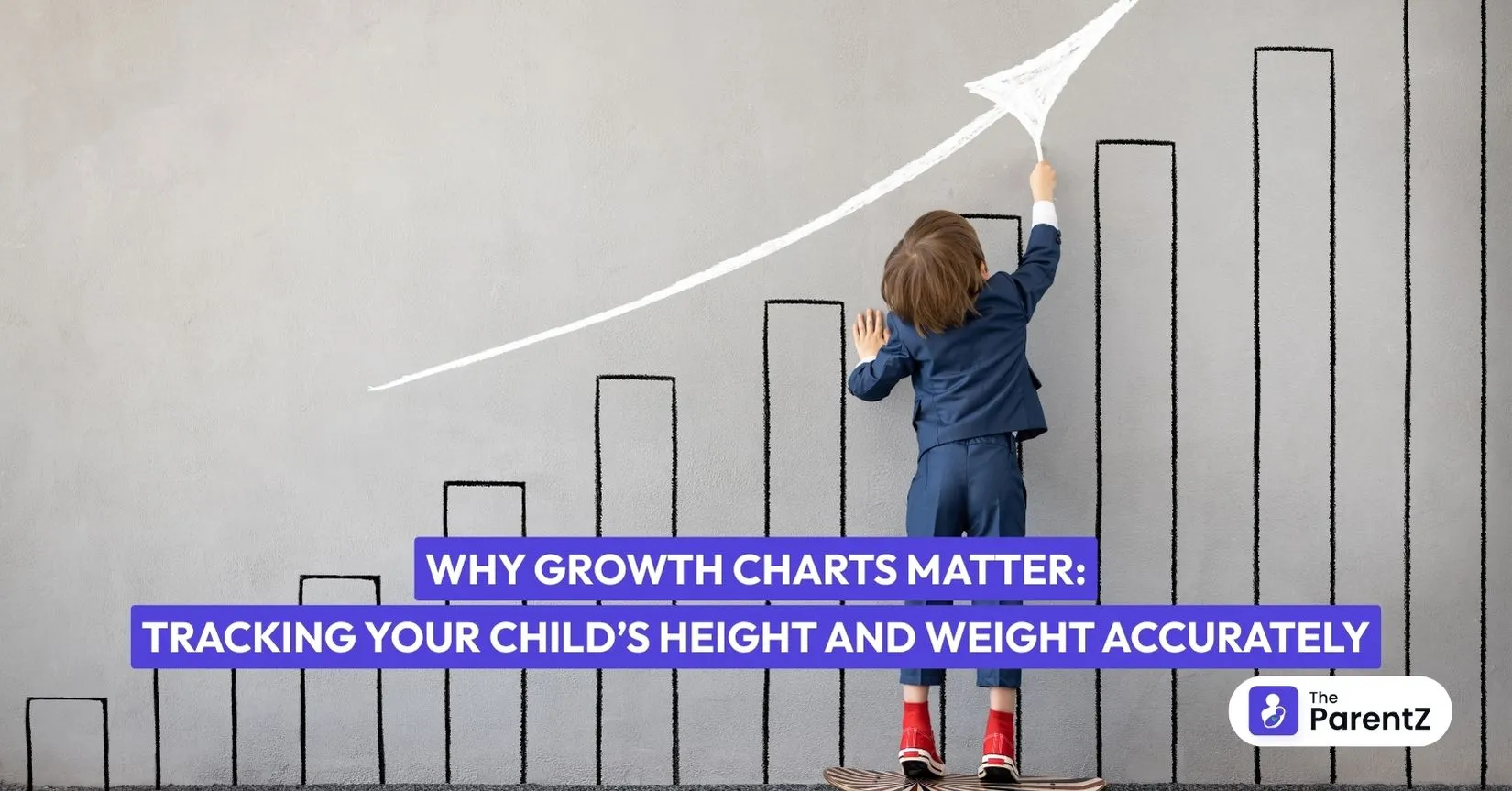Let’s talk about something all parents think about—but don’t always understand fully: growth charts.
Maybe you’ve seen them at the doctor’s clinic. Maybe you’ve looked at those curved lines and nodded politely, even though none of it made sense. Don’t worry, you’re not alone.
The truth is, tracking your child’s height and weight isn’t just something doctors do for fun. It’s one of the most important ways to understand how your child is growing. And thanks to baby growth apps, it’s become a lot easier than it used to be.
Why Tracking Height and Weight Matters
Your baby can’t tell you if something’s off in their body. They can’t say, “I’m not gaining enough weight,” or “I don’t feel like I’m growing right.” But their growth patterns can.
Regular tracking helps you:
- See if your child is growing steadily
- Notice early signs of undernutrition or overnutrition
- Understand how illness or health conditions might be affecting growth
- Keep a clear record of progress
- Ask the right questions at the right time
Growth isn’t just about getting taller. It’s about healthy development. When growth slows too much or shoots up too fast, it can sometimes be a sign of something deeper.
The Good Old Days (And How It’s Changed)
A few decades ago, parents had to rely only on memory or scribbled notes. If you forgot to ask the doctor or lost the little chart, you were out of luck.
Today? You just open an app on your phone. You can enter your child’s weight, height, and even head size. The app shows you graphs. You get gentle reminders. You see patterns right away.
Apps like TheParentZ Baby Growth & Health Tracker App make it feel like you’ve got a smart notebook in your pocket—without needing to flip a single page.
What Is a Growth Chart?
A growth chart is a visual tool for comparing your child’s growth to that of other children of the same age and gender.
The chart has curved lines called percentiles. These lines show average patterns. If your child is following one of these curves steadily, that’s a good sign.
There are different charts for:
- Weight-for-age
- Height (or length)-for-age
- Head circumference
- BMI-for-age (for older kids)
These charts are not exams. There is no passing or failing. They simply show how your child is growing compared to others.
How to Use Growth Charts at Home
You don’t need to be a doctor to read a growth chart. Here’s how to use one step-by-step:
- Measure Your Child: Use a weighing scale and a height board or tape. If your baby is under 2, measure their length while lying down. Above 2, measure standing height.
- Open Your App: A good app will have built-in growth chart tracking. You enter your child’s measurements and the date. The app then plots it on the chart for you.
- Look at the Curve: Find out which percentile your child is in. For example, if your child is in the 40th percentile for height, that means 40% of kids their age are shorter, and 60% are taller.
- Watch the Pattern: If your child always stays around the 40th percentile, that’s great. It means they’re growing steadily. A big drop or rise could mean something needs attention.
When to Worry—and When Not To
Let’s clear this up: being in a low percentile is not always bad. Some kids are just naturally smaller. Some are naturally tall. What matters most is the trend over time.
Here are a few signs that might need a closer look:
- A sudden drop across two percentiles (like from 50th to 10th)
- No weight gain or height gain for several months
- Very rapid weight gain
- Head circumference not increasing at all in the first year
- Growth slowing after illness or medication
If you notice any of these, don’t panic. Just book an appointment with your doctor. You’ll be glad you caught it early.
Things to Avoid When Using Growth Charts
1. Obsessing Over Every Number: It’s easy to worry over a tiny dip in weight. But one off week doesn’t mean something is wrong. Kids grow in spurts.
2. Comparing with Other Children: No two kids grow the same way. One child might be chubby and slow to grow tall. Another might be thin, but shoot up fast. Both can be perfectly healthy.
3. Measuring Too Often: Weighing your baby daily can be stressful. Do it once every two weeks or monthly. That’s enough to see trends without stressing over minor changes.
4. Ignoring Other Signs: If your child is active, happy, sleeping well, and eating okay, that says a lot. Charts help, but they’re just one part of the story.
Reading Growth Charts the Right Way
Let’s say your app shows your baby is in the 25th percentile for weight and 50th for height. What does that mean?
It simply means your child weighs more than 25% of kids their age and is taller than 50% of them. That alone doesn’t tell you if anything is wrong. The key thing is that their weight and height are growing along the same curve, not dropping suddenly.
Apps like TheParentZ Baby Growth & Health Tracker App show these lines clearly. You can tap to see the full chart and even zoom in. You won’t need a degree to figure it out.
Conclusion
As a parent, you already do a lot. Adding growth tracking might sound like another task. But it’s really not. With the right app, it becomes a gentle habit. And it gives you confidence. You don’t need to be perfect. Just be curious. Be aware. Be there.
Growth charts are a tool to help you understand your child better, not to worry you. So take a breath, open that app, and start where you are. One entry at a time. What matters most is that your child is growing, learning, and being loved. The rest will follow.








Be the first one to comment on this story.